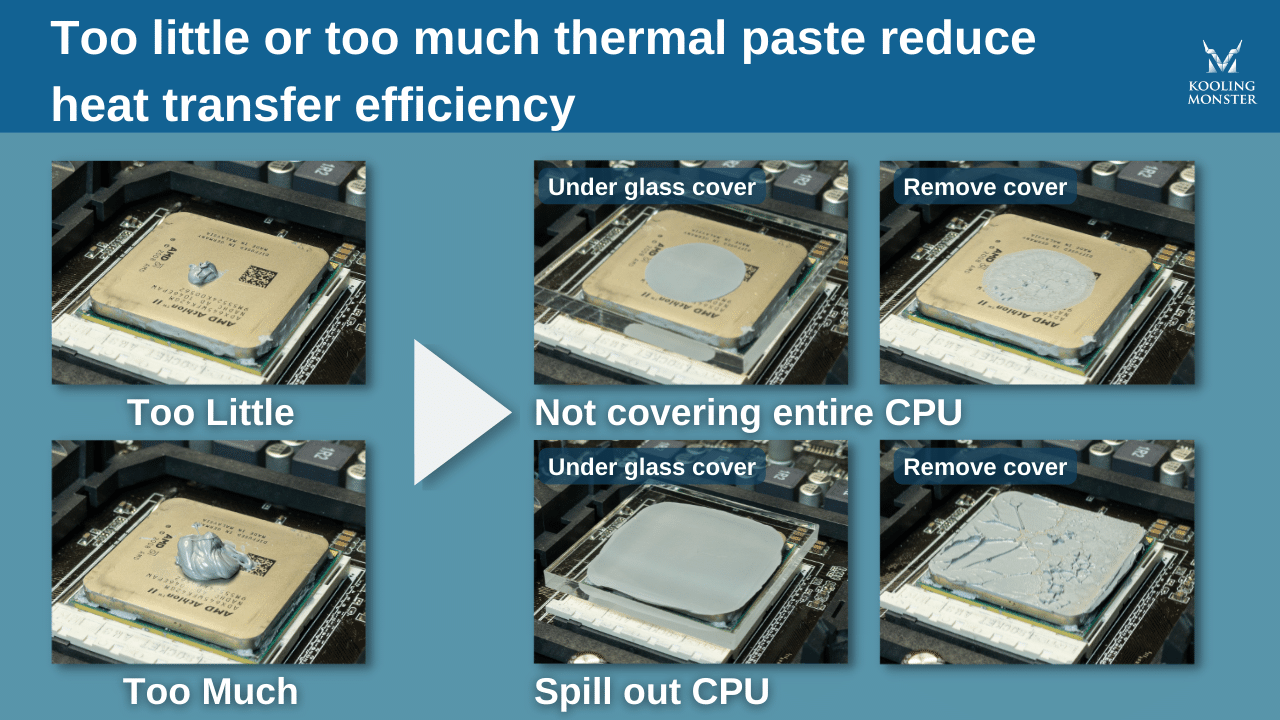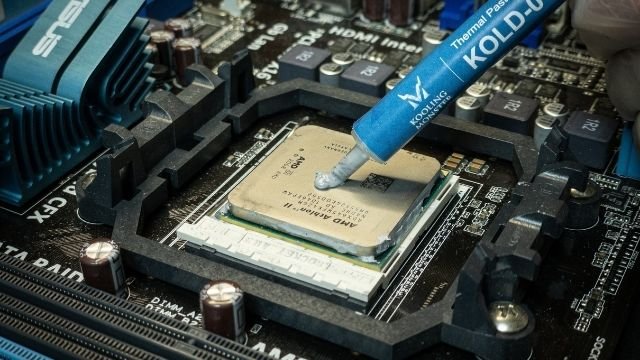Can You Reuse Thermal Paste on CPU?
As a thermal interface material, thermal paste is frequently utilized as a conductive material between heat sources like high-power semiconductor applications. If you want to eradicate air gaps from an interface area to maximize heat transfer within a CPU, purchasing thermal paste may be wise. But what about when you’ve used the paste once? Can you reuse it? Read on to find out more!
Is it ok to reuse thermal paste?
It isn’t recommended to reuse thermal paste. This type of paste loses solvent under heat within a real-life application. In these conditions, thermal paste tends to crack and dry out, losing its ability concerning thermal transfer.
Thus, we recommend utilizing new thermal paste, which will work to the best of its ability and prevent the risk of inefficient side effects.
If you really have to reuse thermal paste, you should pay attention to a few things. It would be best to use paste with no organic solvents to stop the problems mentioned above. A heat sink can still offer a little heat transfer when users apply reused paste. However, users must consider that this paste intends to fill a gap made by microscopic valleys and pits when the CPU and heat sink get close to each other. Therefore, it’s critical to ensure that the used thermal paste is not contaminated with dirt, dust, or any other factor that will stop the CPU and heat sink from being in close contact. All in all, you should avoid reusing thermal paste, but there are a few things to consider if there is no other alternative.
How to tell if thermal paste is bad on CPU?
If you are unsure of whether you’ve done a good or bad job applying thermal paste to your CPU, there are a few things to look out for. For starters, your computer performance can give the first hint that something might be wrong. Is your computer speed slowing down? Are you losing cooling performance? Is your PC crashing? This poor performance could all be down to the applied thermal paste.
Furthermore, you may have noticed that the CPU temperature is far from ordinary. Since the central role of the CPU is to process data, it generates extreme heat by doing many calculations at rapid speeds in a compact space. It’s critical to keep the CPU below certain temperatures to prevent the issue of system instability and, even more severe, permanent component damage. When your computer is idle, the safe temperature range for CPUs is commonly around 40 to 55 degrees Celsius. However, users must keep in mind that different factors can impact this, such as the type of system, power supply quality, and geographical location. Anything above 80 degrees Celsius is highly concerning. When this happens, it’s time to reduce the overclocking, improve your cooling system, buy extra fans, and apply all-important, new thermal paste to your cooler. (Learn more about How to check CPU temperature and why is it important?)
You can look out for particular appearances of thermal paste on the CPU, with stiff, cracked, and dry formations often being a concern once the organic solvent dissipates into the surrounding atmosphere. These characteristics tell you that the paste is old and that you may need to buy a new paste to enhance the safety and performance of your CPU. After all, when this paste dries, it becomes crumbly and leaves air pockets, meaning that the gaps it is supposed to be filling aren’t filled to a quality standard. This means that heat isn’t transferred sufficiently, hindering the efficiency of the process.
Furthermore, thermal paste that was not appropriately applied can also be a problem in this situation. An unsuitable application can make a mess, but it can also hinder the computer’s performance, meaning that it is essential to do it right. It may not cover the entire CPU, be too thick, or may drip. If you are concerned about the coverage, applying the paste at several different spots on the IHS is wise. You should utilize enough paste to spread it out when you mount the cooler.
Can I reuse thermal paste from syringe?
Commonly, manufacturers pronounce the lifespan of thermal paste raw material as 6 to 24 months, but this relies on the paste being held in optimal conditions. With many different syringes, compound mixtures, and brands, it can be challenging to give a single answer, so let’s break down differing factors instead.
Consider the storage conditions of this paste. If you have placed the used paste in a tightly sealed area with a relatively average temperature, it could technically be utilized again if buying new paste isn’t an option. Storing the paste properly is essential to help its lifespan, so paying attention to a couple of tips can help you prolong a relatively new tube of paste’s life.
Firstly, twist the cap on the paste tightly. If the syringe’s construction makes this impossible, put it in a Ziploc bag instead. Next, be sure not to pull the plunger back. Pulling it will invite air into the barrel, exposing the paste to oxidation and drying it out. Further, seek out an area with an average room temperature – avoid anything which can be too hot or too cold such as an attic. Finally, ensure that you prevent the tube from being exposed to sunlight. This means that a drawer is a wise storage place for thermal paste.
Furthermore, consider the expiration date of the thermal paste. Expired paste should not be applied to your CPU and heat sink since its consistency is critical to regulating heat dissipation. It is recommended to put some thermal paste onto a metal surface and spread it to observe its smoothness and texture. The paste certainly won’t be able to be reused from a syringe if it appears to be clumpy, watery, or separated. (Learn more about Does thermal paste expire in tube? From practical and technical view points)
How to tell if thermal paste is expired?
The average shelf life of thermal paste is usually between 6 and 24 months, although the environment in which it is stored can impact this. This idea means that you should be careful about where you buy your paste. This product can suffer from heat or extremely cold conditions, which can negatively impact its performance on your CPU.
It might be worth establishing that the term ‘expired’ means different things for different substances. For thermal paste, observing its viscosity can determine expiration. You’ll want to make sure that it easily comes out of the tube, spreads smoothly, and isn’t too sticky. If it is hard to get out of the tube, difficult to apply, and very sticky, these could be signs that your thermal paste has expired.
Some pastes may naturally be quite dry and thick, so the best way to judge a thermal paste’s expiration is to observe its viscosity. As a general rule, if the paste’s viscosity is double its original state, it can be considered to be expired. Despite this general rule, we must note that different brands have different formulas for creating thermal pastes, resulting in various viscosities, extrusion rates, and hardness, making it a little more challenging to know if a paste has expired or not. (Learn more about Does thermal paste expire in tube? From practical and technical view points)
So, there you have it. Hopefully, you now know that you shouldn’t reuse thermal paste your CPU but are aware of some factors to keep in mind. Taking note of this information is incredibly important in terms of the safety of your CPU and how ineffective paste could impact it.






